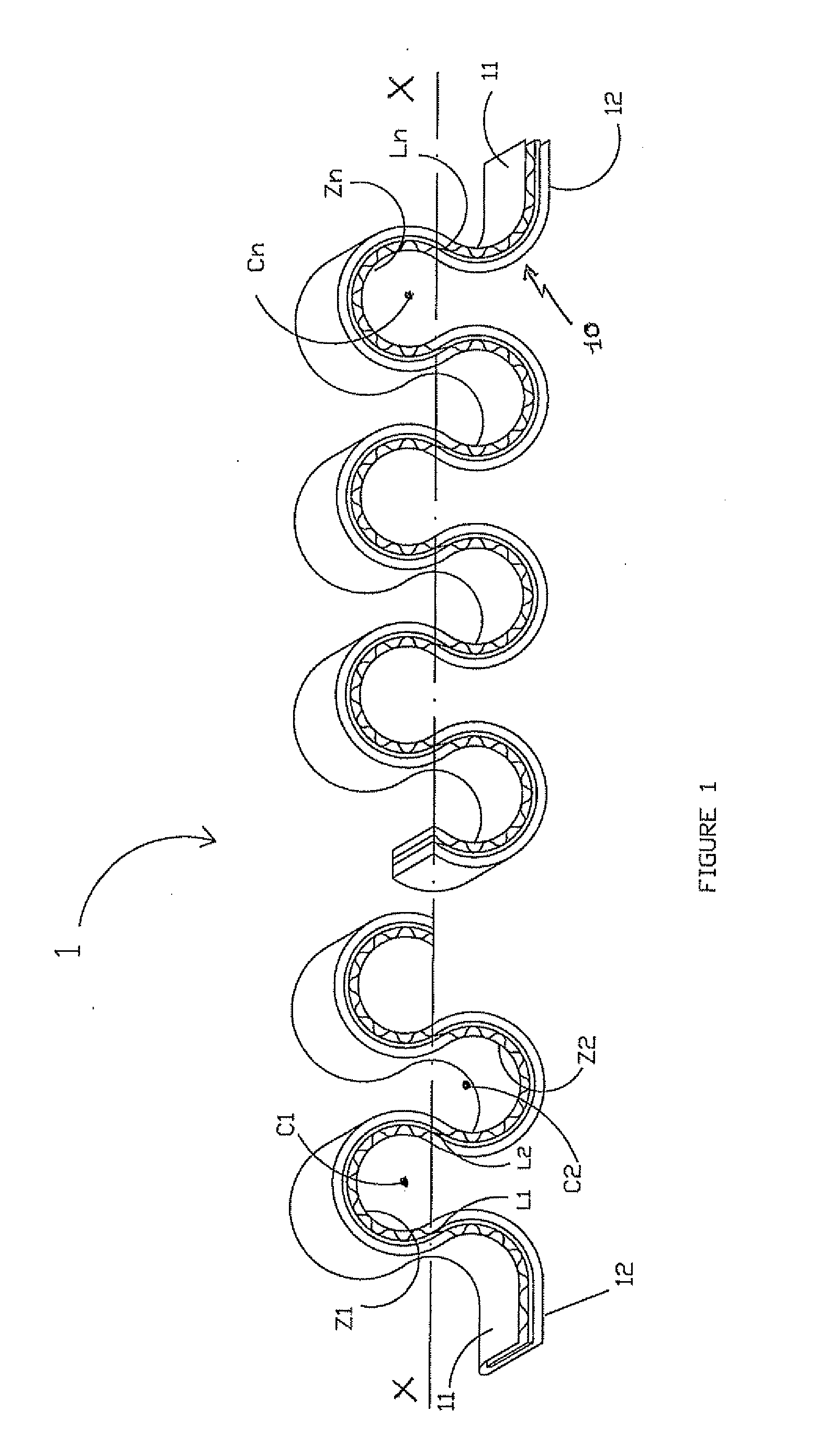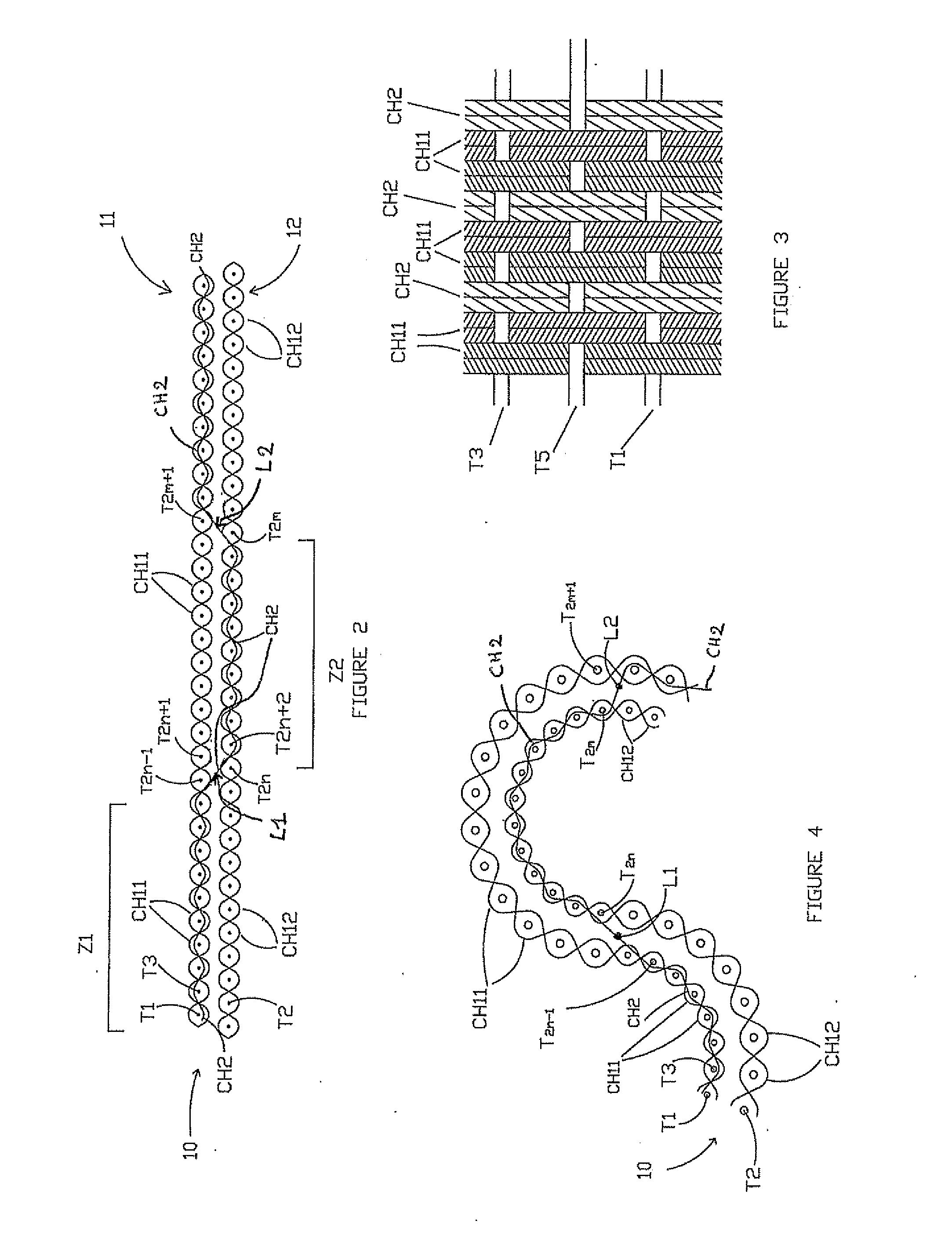Safety lanyard and manufacturing method thereof
a technology of safety lanyards and manufacturing methods, applied in the field of safety lanyards, can solve the problems that the known lanyards do not prove to be totally satisfactory, and achieve the effects of reducing the global space occupation of the lanyard in its rest position, large tension, and reducing the total distan
- Summary
- Abstract
- Description
- Claims
- Application Information
AI Technical Summary
Benefits of technology
Problems solved by technology
Method used
Image
Examples
Embodiment Construction
[0025]The lanyard 1 according to the invention, represented in partial manner in FIGS. 1 to 4, comprises a tubular sheath 10, essentially made from non-stretchable material, and a set of elastic threads described in greater detail in the following. The two opposite surfaces of this sheath, which presents a flattened shape, bear the reference numbers 11 and 12. The non-stretchable material, which is for example high-strength polyamide or polyester, has a very low elongation rate under normal conditions of use of the lanyard. This capacity is much lower than that of the elastic material constituting the threads, i.e. for example an elastomer such as latex or lycra™.
[0026]As shown in FIGS. 2 and 3, the sheath is woven from warp threads and weft threads. According to the invention, a majority of warp threads CH11 and CH12 made from non-stretchable material, designed to form the two surfaces 11 and 12, are first used. A certain proportion of elastic warp threads CH2, called link warp thr...
PUM
| Property | Measurement | Unit |
|---|---|---|
| angle | aaaaa | aaaaa |
| angle | aaaaa | aaaaa |
| elongation | aaaaa | aaaaa |
Abstract
Description
Claims
Application Information
 Login to View More
Login to View More - R&D
- Intellectual Property
- Life Sciences
- Materials
- Tech Scout
- Unparalleled Data Quality
- Higher Quality Content
- 60% Fewer Hallucinations
Browse by: Latest US Patents, China's latest patents, Technical Efficacy Thesaurus, Application Domain, Technology Topic, Popular Technical Reports.
© 2025 PatSnap. All rights reserved.Legal|Privacy policy|Modern Slavery Act Transparency Statement|Sitemap|About US| Contact US: help@patsnap.com



